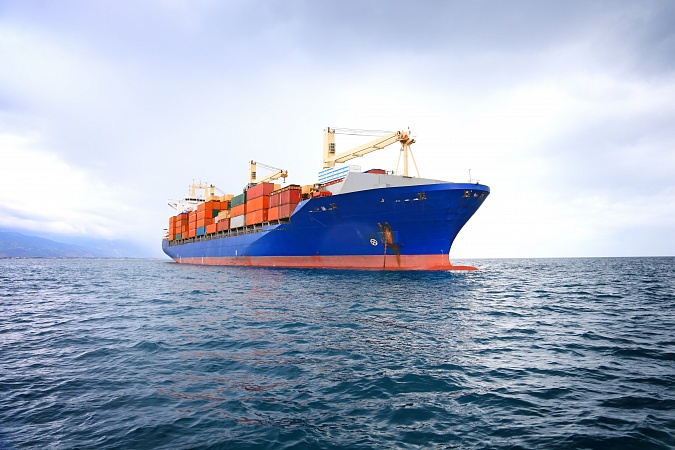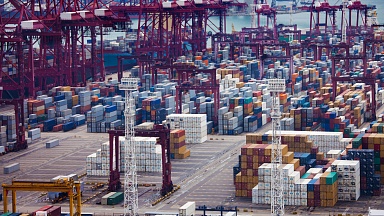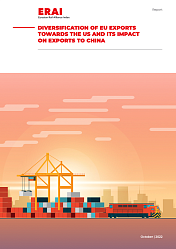Forwarding and other freight sources report some easing of ex-Asia ocean freight markets in the last three or four weeks, including reductions in pricing from China, better availability of containers at origin, and some easing of congestion in destination ports. But some believe it may be ‘the eye of the storm’, with more disruptions to come as recently blanked services come back on line.
One UK-based forwarding source told Lloyd’s Loading List: «We are starting to see tiny progressive improvements. We have definitely seen a reduction in general freight rates — tiny reductions from the carriers directly, but larger decreases in rates from the origin agents.»
That had been the case since the end of February and followed a period of several months — since the third quarter of last year — when for most customers, lines retracted or «wiped» all named accounts and all annual accounts, forcing customers to buy capacity at the massively elevated spot market rates, where rates were increasing on an almost daily basis.
The removal of named accounts and all annual accounts continued until mid-February around the time of Chinese New Year, and since then there has been a beginning of a return towards more normal pricing environment.
Meanwhile, levels of congestion and availability of containers has also improved, although it remains challenging.
Congestion still rife
«Congestion is still rife everywhere — we know that,» said a UK freight forwarding source. «It’s still not good. It’s still bad at all the primary UK container ports, we know that. But we think it might have plateaued.»
And on the availability of containers, he noted: «There was a lot of new container build that injected some fresh equipment capacity into the market, and that eased everything.»
But he said all of these issues are interconnected with every other major trade lane, where there are still significant congestion issues — for example, on the US west coast.
Global inefficiency
«You’ve got vessels queuing — which is inefficient. You’ve got containers stuck there for extra weeks and weeks. That’s inefficient. You’ve got exporters in the states that can’t export because they say they can’t get a container, and they can’t get a vessel slot even if they get one.
«Those larger trade lanes, what’s happening there impacts everything else — as it does here in Europe, too.»
A UK-based container haulage source this week told Lloyd’s Loading List that congestion at UK container terminals had become less problematic in recent weeks, although this may be temporary, noting: «Things have definitely eased, but we believe this may be the eye of the storm. There have been blank voyages and also a drop in volume due to capacity constraints from the Far East; we are aware of substantial volumes already shipped or waiting to ship and expect volumes to peak again. A lot will depend on the behaviour of the (British) consumer post-lockdown as to how the rest of the year will look.»
Meanwhile, another UK-based freight forwarder this week indicated to Lloyd’s Loading List that the situation remained volatile, noting: «Origin wise, we have just seen another spike in space issues at origin and this is forecasted to last for 2-3 weeks — in part due to blank sailings as some carriers switch their schedule.»
Fewer containers offloaded
Regarding schedule reliability, he said: «It’s better than it was» — for example, fewer UK-destined containers offloaded in mainland Europe due to congestion in UK ports. «But we are not where we need to be», he added.
And as for the UK landside port and haulage situation, he said «we are noting less congestion and greater reliability in prompt port release and better transport availability».
In a briefing earlier this week, UK freight forwarder Norman Global Logistics said intense competition for scarce vessel space and equipment, means that prices are likely to stay strong, even if demand subsides slightly.
Pricing power is with carriers
It added: «The container shipping lines have not seen the usual slowdown in demand from Asia after the Chinese New Year and, aided by the announced blank sailings, their pipeline of cargo and short-term volume projections remain very strong, which leaves pricing power very much with the carriers.
«Consecutive blanked sailings by the Ocean Alliance are putting upward pressure on rates from the UK and Europe to the US, which have largely not been subjected to the massive increases impacting other routes. The level of announced blank sailings for March and April are at the consistently elevated levels, we have seen since last year, which leads us to wonder if the lines are trying to avoid the chronic port congestion on the US west coast, rather than an attempt to drive up rates.»
Drewry’s latest composite World Container index decreased for the 4th consecutive week, falling last week by 1.7% or $85 to reach $4,942 per 40ft container, but it remains more than three times the level last year (+233%). The average composite index of the WCI for year-to-date, is $5,186 per 40ft container, almost three times the five-year average of $1,725 per 40ft container.
Freight rates on Shanghai-Rotterdam slipped 2% or $196 to touch $7,741 per feu, although they are more than four times the level last year (+343%). Shanghai-Genoa declined 4% or $292 to stand at $7,985 for a 40ft box — also more than four times the level last year (+306%).





